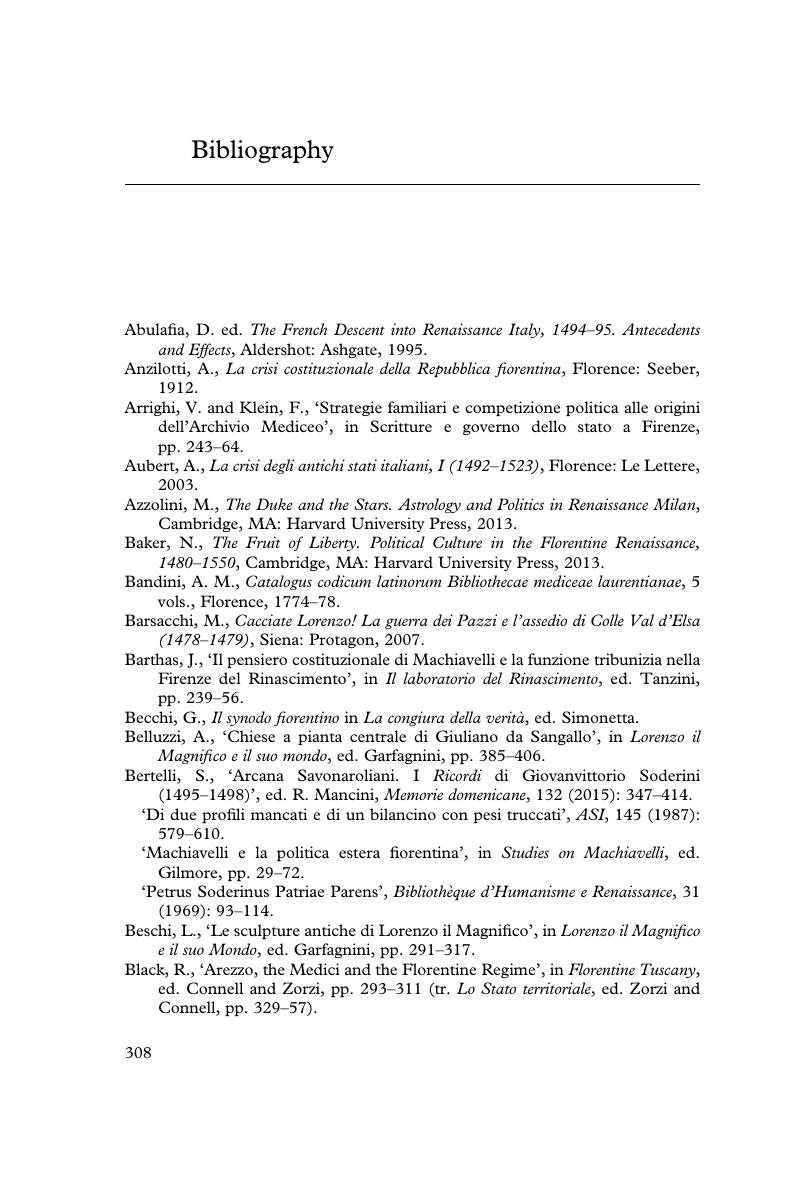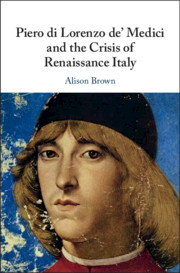Book contents
- Piero di Lorenzo de’ Medici and the Crisis of Renaissance Italy
- Piero di Lorenzo de’ Medici and the Crisis of Renaissance Italy
- Copyright page
- Dedication
- Contents
- Acknowledgements
- List of Abbreviations
- Introduction
- Part I The Early Years
- Part II Between Republicanism and Princely Rule
- Part III Piero in Power
- Part IV Piero in Exile
- Conclusion
- Bibliography
- Index
- References
Bibliography
Published online by Cambridge University Press: 20 December 2019
- Piero di Lorenzo de’ Medici and the Crisis of Renaissance Italy
- Piero di Lorenzo de’ Medici and the Crisis of Renaissance Italy
- Copyright page
- Dedication
- Contents
- Acknowledgements
- List of Abbreviations
- Introduction
- Part I The Early Years
- Part II Between Republicanism and Princely Rule
- Part III Piero in Power
- Part IV Piero in Exile
- Conclusion
- Bibliography
- Index
- References
Summary

- Type
- Chapter
- Information
- Piero di Lorenzo de' Medici and the Crisis of Renaissance Italy , pp. 308 - 324Publisher: Cambridge University PressPrint publication year: 2020



